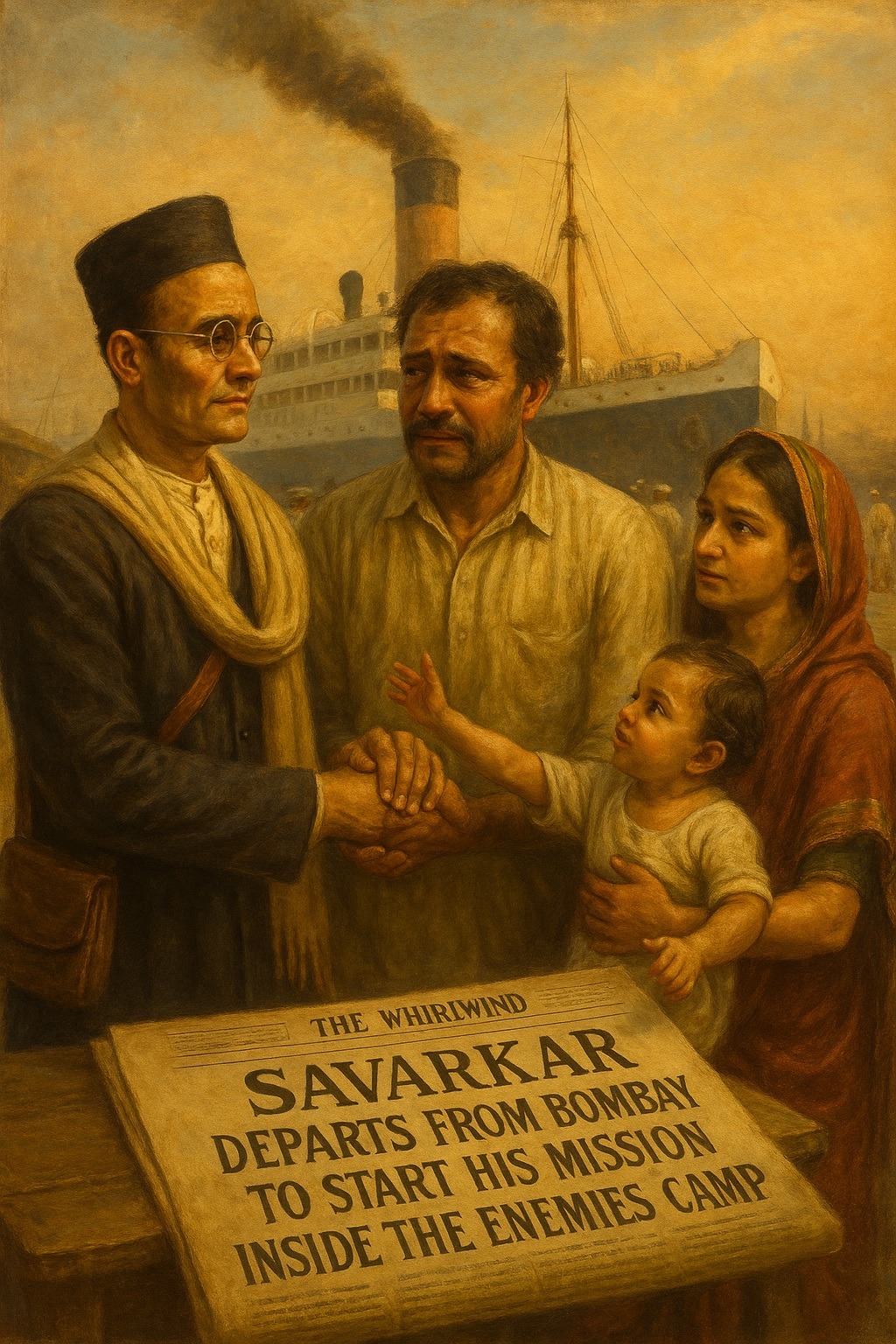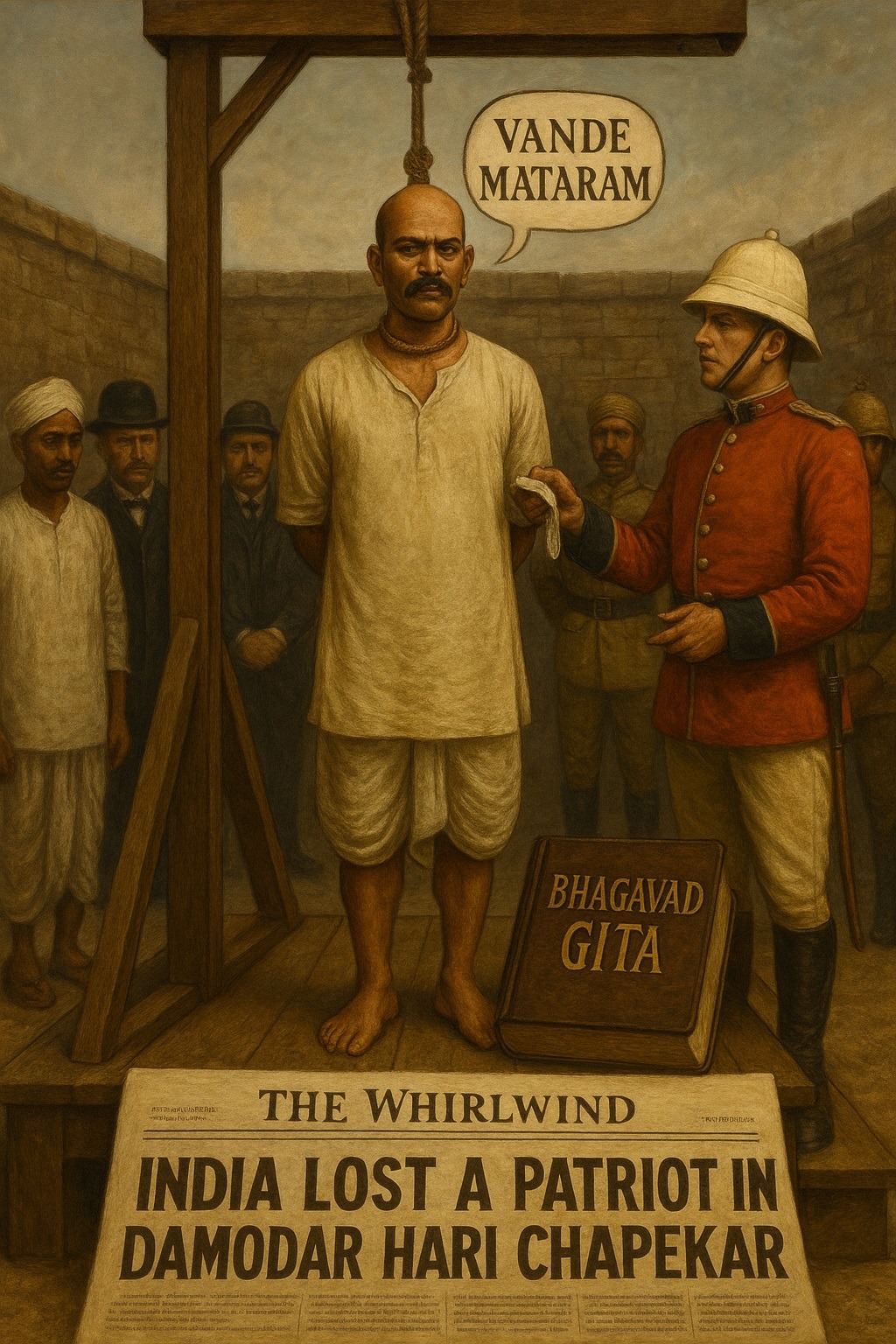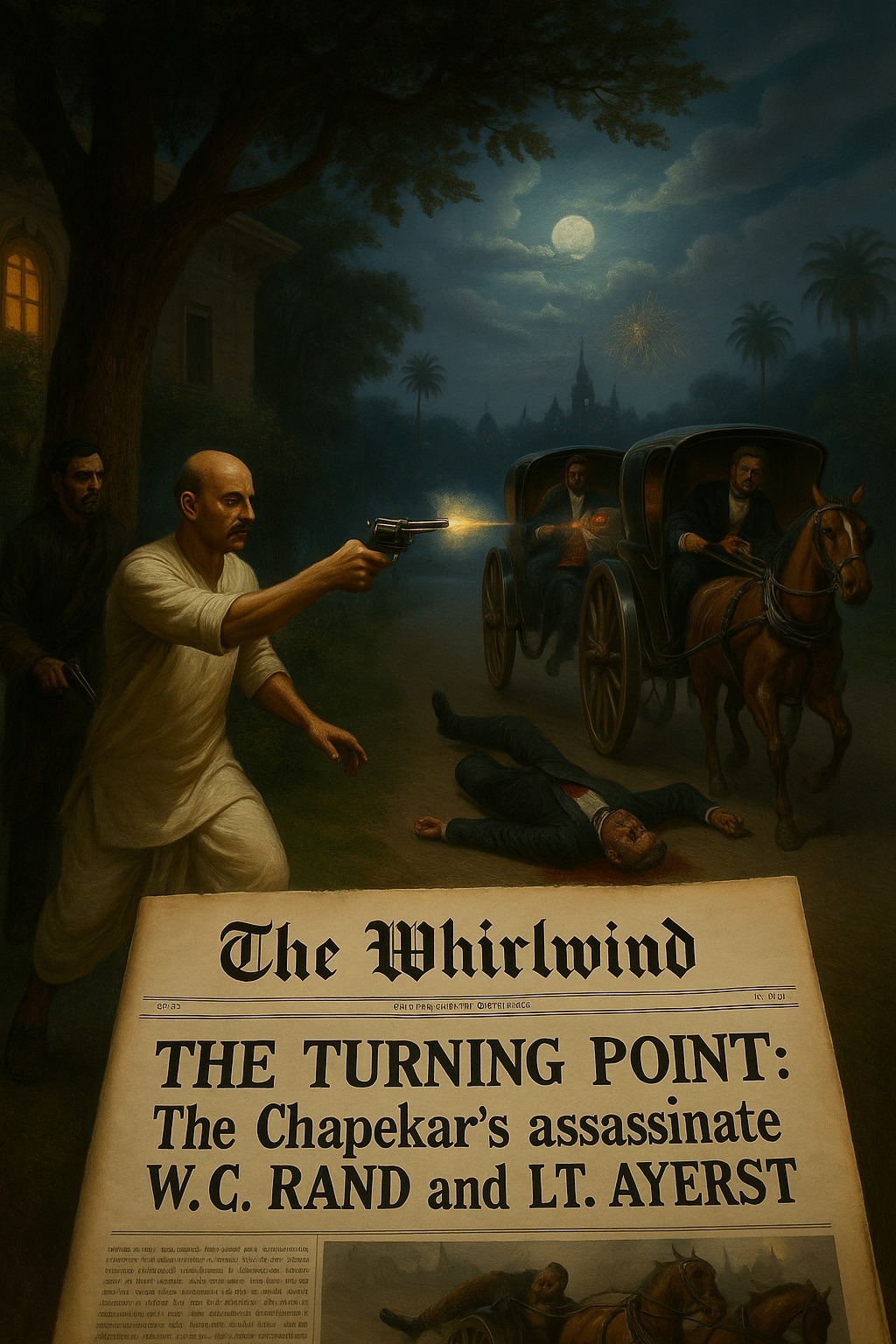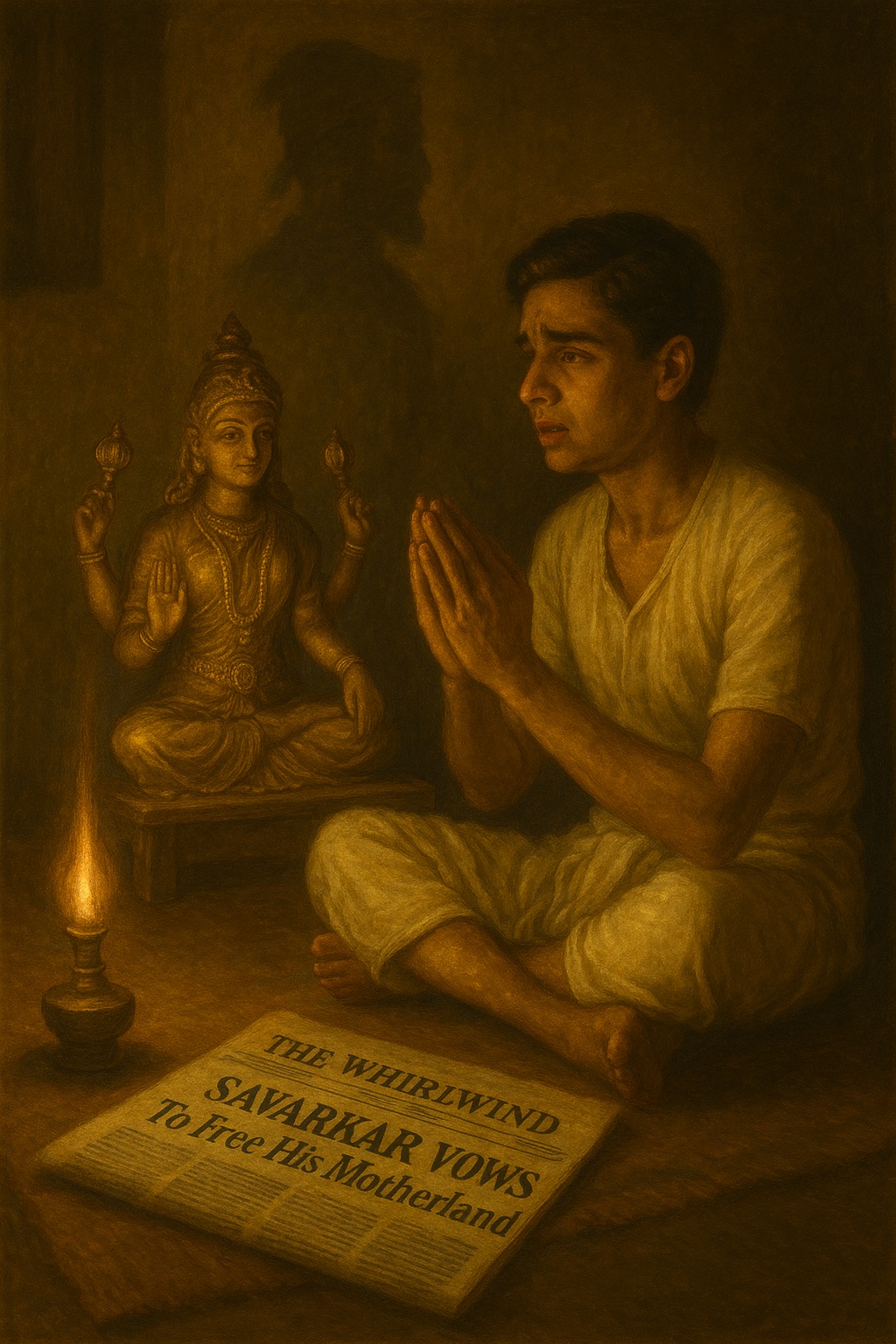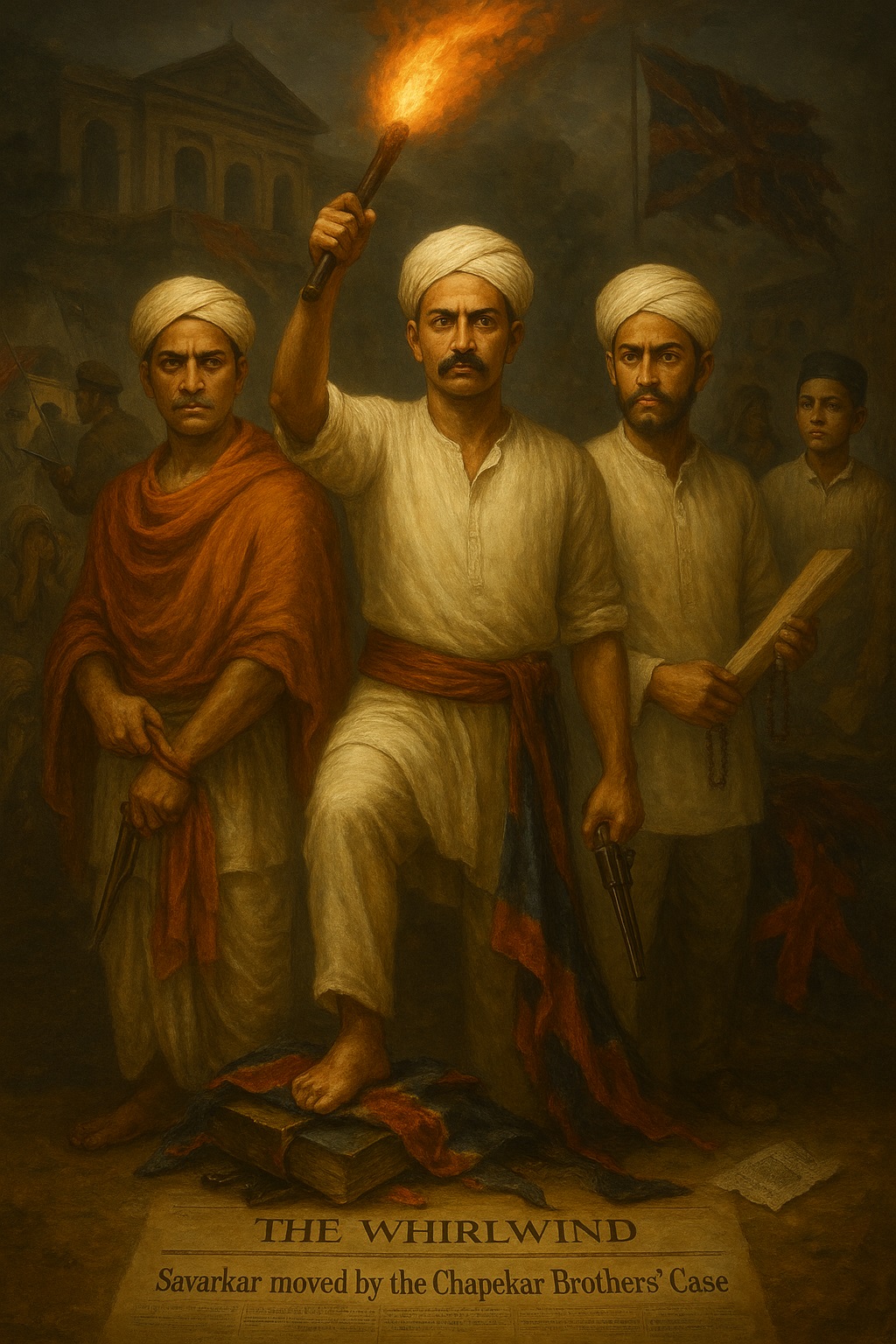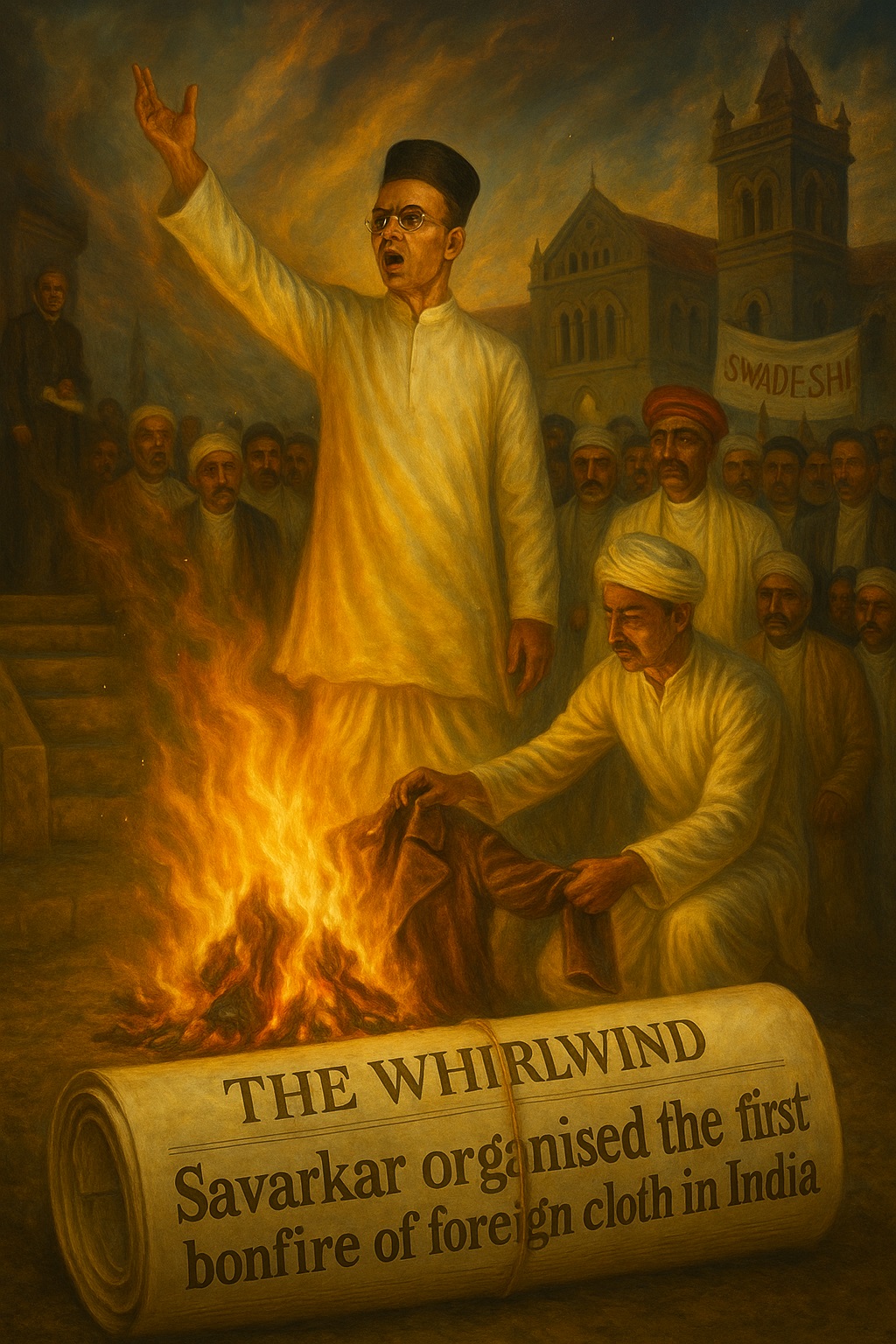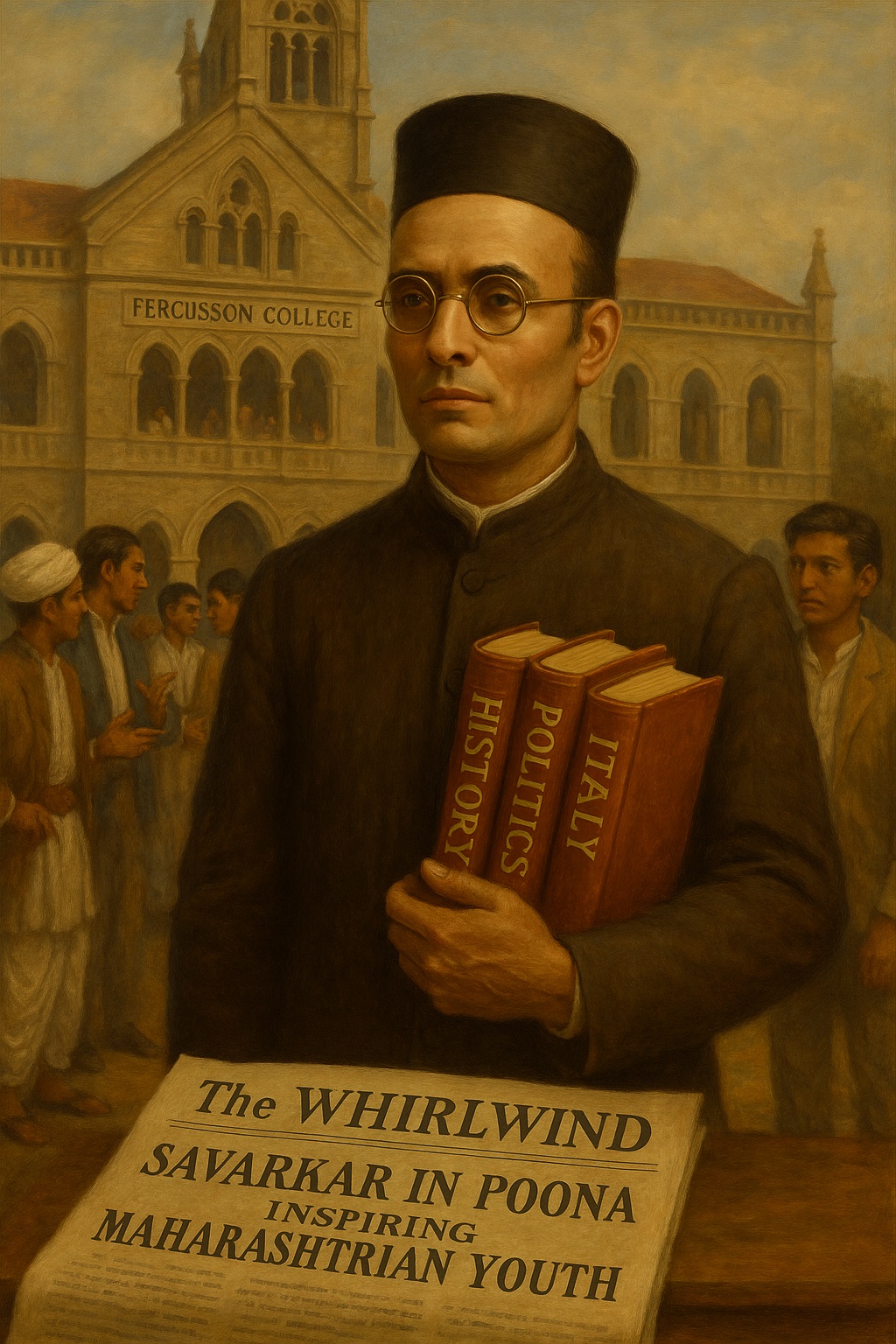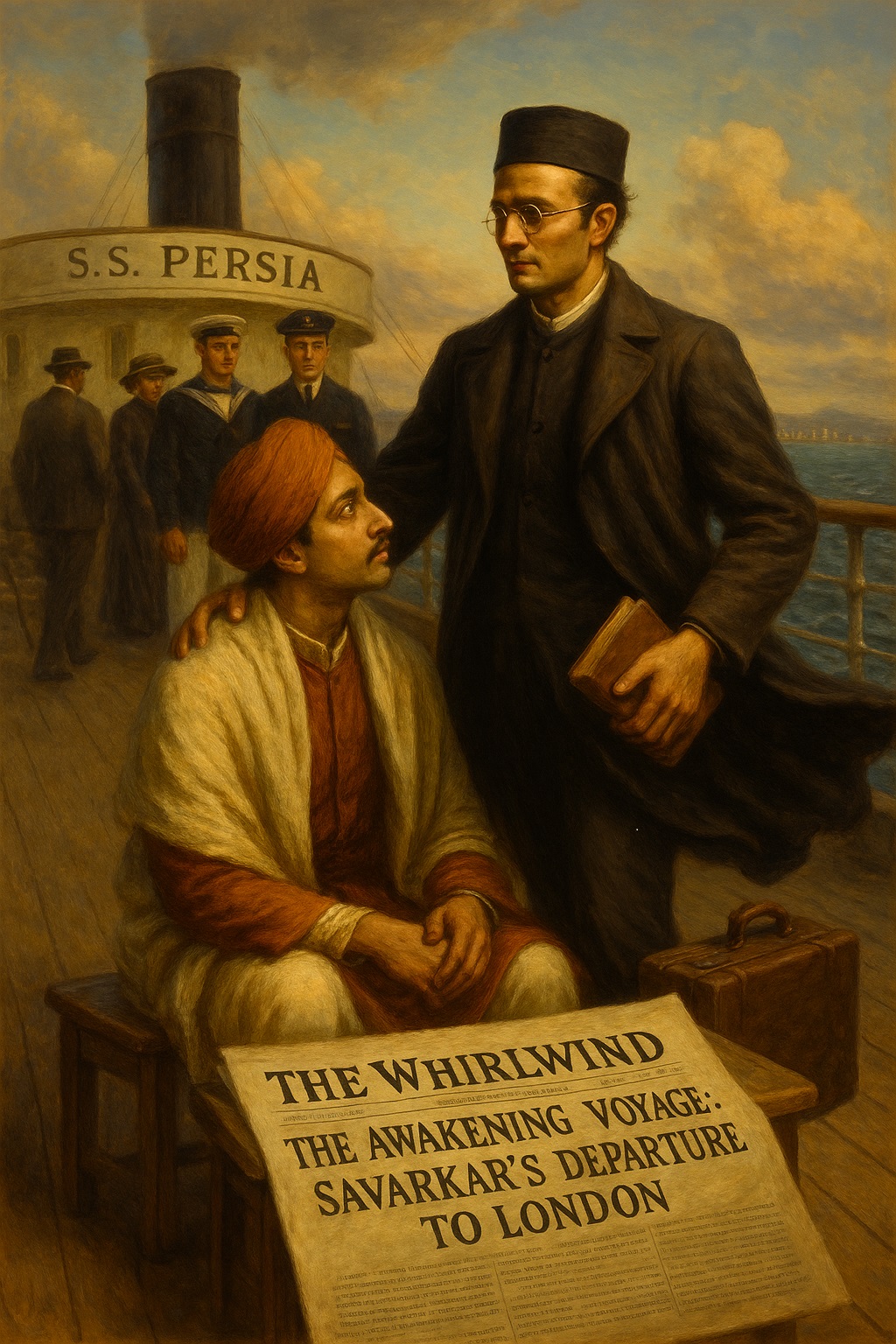Category: Savarkar: Defining Moments
-
In the closing years of the 19th century, when the Indian National Congress (INC) still placed its hopes in petitions and polite appeals, a young man from Chinchwad near Pune took a radically different path. Damodar Hari Chapekar became one of the first Indians in modern history to take up arms against British colonial authority…
-
One night, in the town of Bhagur, a boy stood before a statue of the armed Goddess Durga. This boy was Vinayak Damodar Savarkar, and the vow he took that night would ignite a revolutionary desire to stand up against British colonial rule in India. The immediate spark was the execution of the Chapekar brothers…
-
In 1897, Poona reeled under a brutal bubonic plague and even harsher British repression. To control the outbreak, British officials led by Collector Walter Rand enforced draconian measures – homes were raided, women harassed, and dignity trampled. While most of society watched in helpless silence, the Chapekar brothers – Damodar, Balakrishna, and Vasudev – chose…
-
In 1905, being in his early twenties, Vinayak Damodar (Veer) Savarkar emerged as a fiery student leader in Poona, galvanizing youth against British imperialism. A staunch proponent of Swadeshi, Savarkar saw the boycott of foreign goods as the moral counterpart to the political opposition to the Partition of Bengal by Viceroy Lord Curzon planned to…
-
On 24 January 1902, Vinayak Damodar Savarkar enrolled at the prestigious Fergusson College in Poona, undertaking a major in the arts with the aim of securing a Bachelor of Arts (B.A.) degree. At the turn of the century, Fergusson College had become a vibrant hub of nationalist thought and reformist energy. It attracted some of…
-
In June 1906, a young Vinayak Damodar Savarkar stepped aboard the S.S. Persia, setting sail for England. At first glance, it may have appeared to be a student’s voyage in pursuit of a legal education. But this journey would prove far more consequential—not just for Savarkar, but for the future of India’s freedom struggle. Funded…

